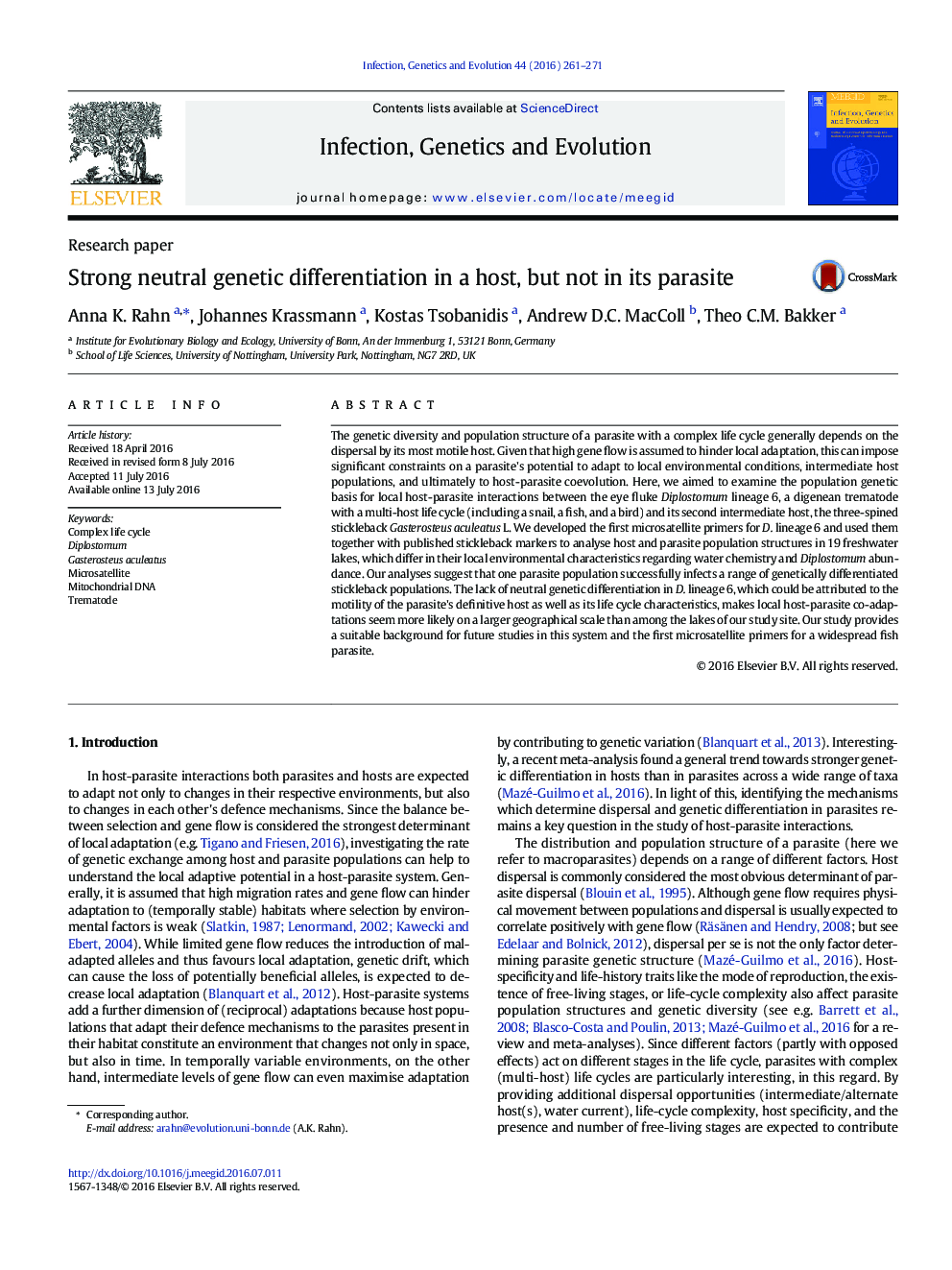| Article ID | Journal | Published Year | Pages | File Type |
|---|---|---|---|---|
| 5908148 | Infection, Genetics and Evolution | 2016 | 11 Pages |
â¢Population genetic analysis of a trematode and its fish host in a fragmented habitatâ¢Genetic differentiation among three-spined sticklebacks reflects isolation of lakesâ¢Parasite population genetic structure not dependent on intermediate host dispersalâ¢Development and application of first microsatellite primers for a non-lens eye flukeâ¢Molecular (cox1) evidence for Diplostomum lineage 6 infections in Pungitius pungitius
The genetic diversity and population structure of a parasite with a complex life cycle generally depends on the dispersal by its most motile host. Given that high gene flow is assumed to hinder local adaptation, this can impose significant constraints on a parasite's potential to adapt to local environmental conditions, intermediate host populations, and ultimately to host-parasite coevolution. Here, we aimed to examine the population genetic basis for local host-parasite interactions between the eye fluke Diplostomum lineage 6, a digenean trematode with a multi-host life cycle (including a snail, a fish, and a bird) and its second intermediate host, the three-spined stickleback Gasterosteus aculeatus L. We developed the first microsatellite primers for D. lineage 6 and used them together with published stickleback markers to analyse host and parasite population structures in 19 freshwater lakes, which differ in their local environmental characteristics regarding water chemistry and Diplostomum abundance. Our analyses suggest that one parasite population successfully infects a range of genetically differentiated stickleback populations. The lack of neutral genetic differentiation in D. lineage 6, which could be attributed to the motility of the parasite's definitive host as well as its life cycle characteristics, makes local host-parasite co-adaptations seem more likely on a larger geographical scale than among the lakes of our study site. Our study provides a suitable background for future studies in this system and the first microsatellite primers for a widespread fish parasite.
Graphical abstractDownload high-res image (116KB)Download full-size image
